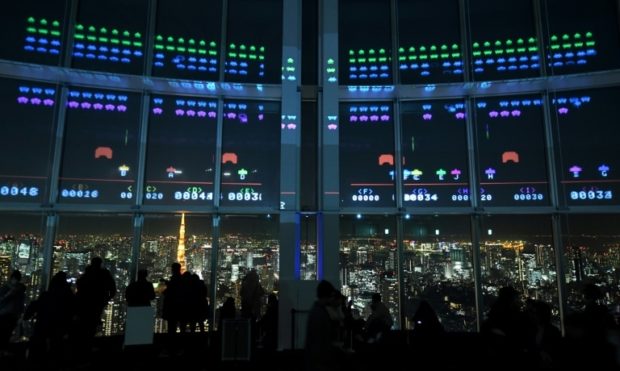
Video games are a $160 billion industry, with billions of players around the world. Image: AFP/Kazuhiro Nogi
In the quarter of a century since Sony launched the groundbreaking PlayStation, video games have exploded into the biggest form of entertainment in the world, and analysts say the growing diversity of billions of players is reshaping the industry.
The Japanese tech giant and its American rival Microsoft are preparing to launch their latest consoles next week, competing in an estimated $175 billion global market — bigger than film and music combined.
Earlier seen as niche entertainment usually marketed to young men, gaming has benefited from a 1990s push to attract more customers, analysts say, with the PlayStation leading the way in breaking down gender, age and class barriers.
“In the last couple of decades, we have witnessed a strong move towards the democratisation of gaming. Twenty-five years ago, gaming was still considered by most people a marginal form of entertainment,” said Guilherme Fernandes, a market consultant at the gaming and esports analytics firm Newzoo.
After the PlayStation came Microsoft’s Xbox in 2001 and Nintendo’s Wii in 2006, followed by the smartphone revolution as gaming’s popularity skyrocketed.
There are 2.7 billion gamers worldwide, Newzoo estimates, and nearly half are women.
Gamers have also become older in many major markets — the age range of the average gamer in the United States is 35 to 44, according to the Entertainment Software Association.
Affordability has also brought in a bigger audience, experts say. Sony caused a stir with a surprisingly low price for the first PlayStation, which proved a commercial success.
“If we correct for inflation, consoles are so much cheaper today than they were in the 80s and 90s. It was really… an upper-middle-class kind of entertainment at that point,” said Mikael Jakobsson, research coordinator at the MIT Game Lab.
The impact was clear in the U.S., he said, “where the PlayStation started to appeal to lower-middle-class, working-class people in a way that previous console generations just hadn’t.”
The spread in recent years of inexpensive yet highly capable smartphones has further broadened audiences, with people playing games on their mobile devices and connecting over social media.
Ugly underbelly
With games becoming a more universal pastime, the impression that they were the domain of young men has been challenged.
“Developers are increasingly taking diversity seriously, expanding the number of female and minority lead protagonists in their games,” said Newzoo’s Fernandes.
That shift, however, has been far from smooth, and came after years of warnings that misogyny, bullying and other toxic behaviour were rampant in gamer culture.
The industry was forced to act after the first high-profile wave of harassment in 2014, dubbed Gamergate, which started after an ex-boyfriend falsely accused American game developer Zoe Quinn of seeking favourable reviews in exchange for sex.
Quinn — who goes by non-gendered pronouns — faced rape and death threats, and their personal information was leaked online.
Women in the industry and feminist figures were also threatened by people angered by efforts to improve female representation in games.
Game giants were accused of tolerating or turning a blind eye to the abuse.
“It can sometimes be difficult to explain just how vicious, violent, and cruel” Gamergate was, Anita Sarkeesian, a media critic and target of some of the abuse, wrote on the website Polygon last year.
Major game firms have denounced such behaviour and made diversity pledges, including more women and people from underrepresented communities as protagonists.
Despite the efforts, critics say such abuse and content remain a problem in the industry — among players as well as gaming companies.
Ubisoft, one of the world’s biggest game makers, dismissed some of its top executives this year after a wave of accusations of sexism and harassment shook the firm.
Rise of the streamers
It is not just gamers who are becoming more diverse, but also the ways in which people enjoy games.
Video games are now a spectator sport too. Major tournaments attract thousands of fans and $950 million in esports revenues are expected in 2020, according to Newzoo.
Fans have also flocked to watch others play online, a social media-gaming crossover that has pulled in some of the world’s biggest tech companies — Amazon-owned Twitch and Google’s YouTube are two of the most popular platforms.
“The rise of gaming streamers… has just blown up beyond any expectations,” said MIT’s Jakobsson.
Some have suggested that video games can be seen in the same light as other conventional spectator events.
Jesper Juul, a video game theorist at the Royal Danish Academy of Fine Arts, had a simple explanation for the growing appeal of video games for spectators: “It’s like watching sports, it’s not particularly strange in that sense.” IB
RELATED STORIES:
Fortnite could soon return to Apple iPhones — report
A video games timeline: From ‘Pong’ to the console wars